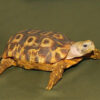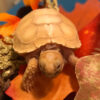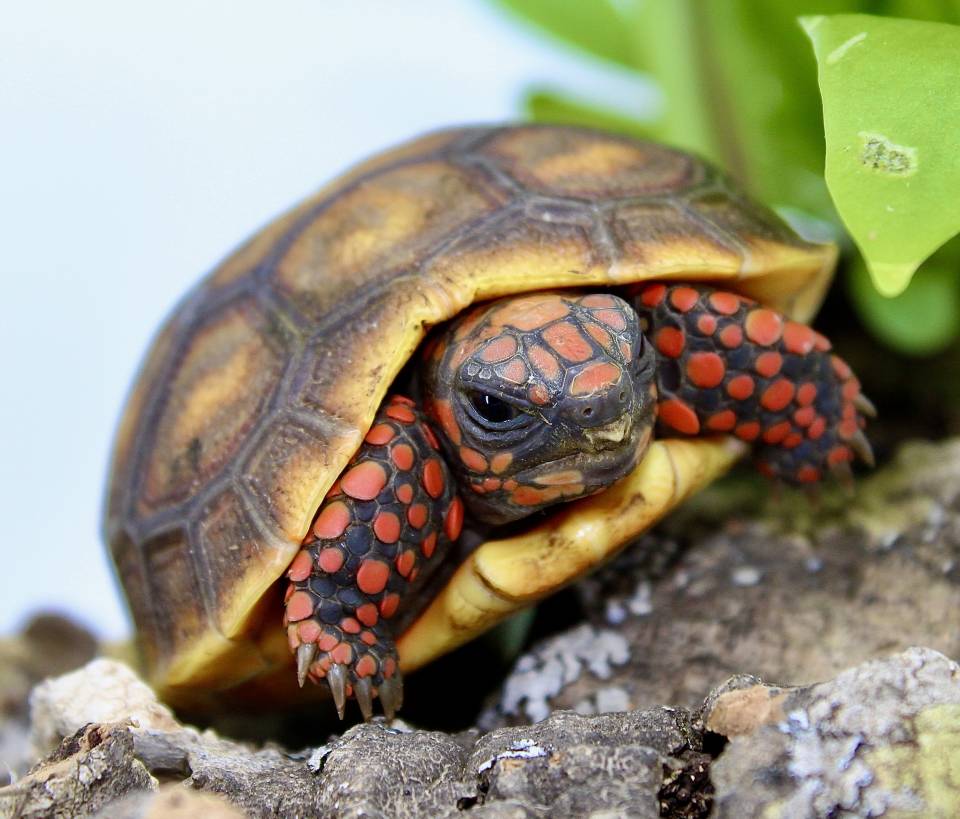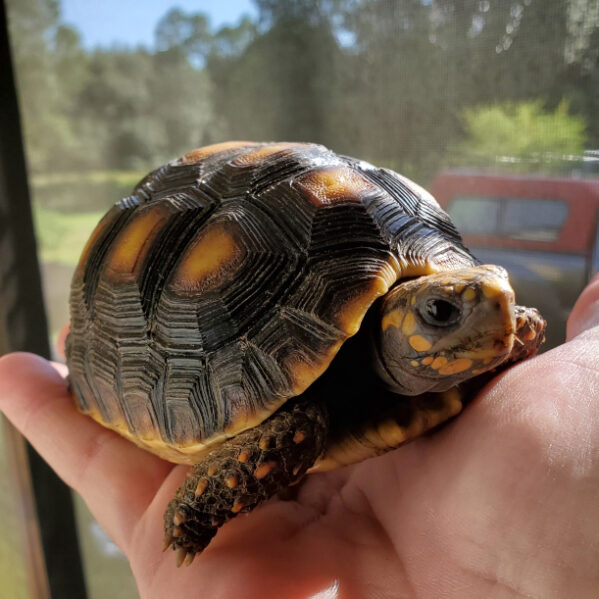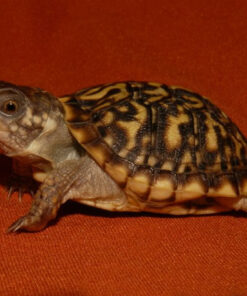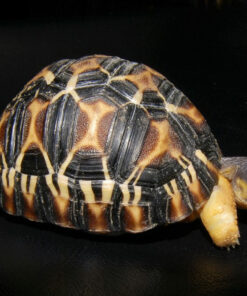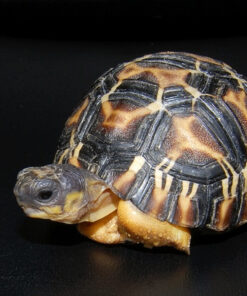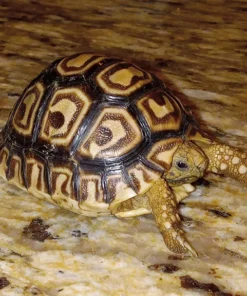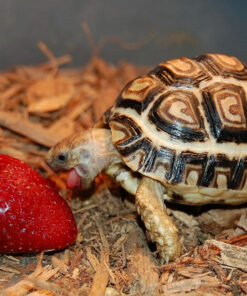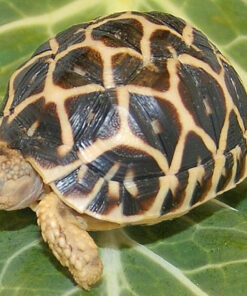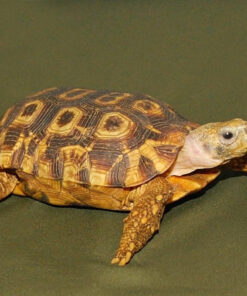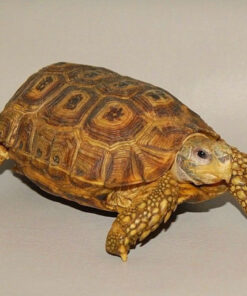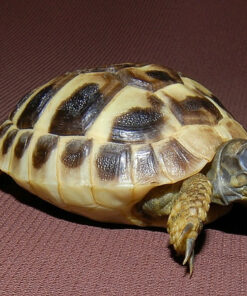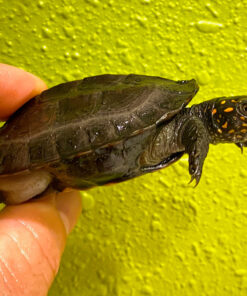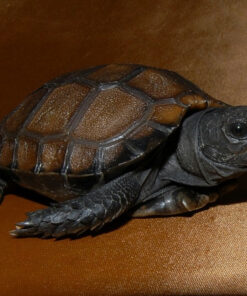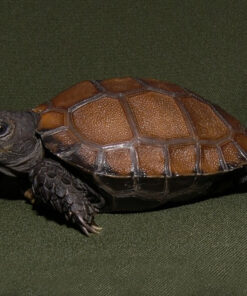$249.99
Explore our captive-bred Yearling Redfoot Tortoises for sale. Ideal for first-time reptile owners. Shop now for healthy, mid-sized tortoises.
Category: TORTOISE for sale
Redfoot Tortoise for Sale: Everything You Need to Know Before You Buy
If you’re considering adding a tortoise to your family, the **redfoot tortoise** (Chelonoidis carbonarius) is a fantastic choice. Known for their striking appearance and friendly demeanor, redfoot tortoises are a popular choice among reptile enthusiasts. Whether you’re searching for a **baby redfoot tortoise** or an adult, understanding what to look for and how to care for these remarkable creatures is crucial. At **newyorkreptiles.com**, we are dedicated to providing top-quality tortoises and expert advice to help you make the best decision.
In this guide, we’ll cover everything you need to know about redfoot tortoises, including where to find them, what to expect when buying one, and how to care for them to ensure they thrive in their new home.
What is a Redfoot Tortoise?
The **redfoot tortoise** is a large, land-dwelling tortoise native to the tropical forests of South America, including Brazil, Colombia, and Venezuela. They are easily recognizable by their vibrant red or orange markings on their legs and head, contrasting with their dark, domed shells.
Key Characteristics of the Redfoot Tortoise:
– **Size**: Redfoot tortoises typically reach sizes of 12 to 16 inches in length, with males often being slightly larger than females.
– **Weight**: Adults generally weigh between 20 to 35 pounds.
– **Lifespan**: With proper care, redfoot tortoises can live up to 50 years or more, making them a long-term commitment.
– **Appearance**: Their colorful red or orange leg and head markings are complemented by a dark brown or black shell, giving them a distinctive and attractive appearance.
Why Buy a Redfoot Tortoise?
Redfoot tortoises are cherished for their friendly personalities and relatively manageable care requirements. Here are some reasons why you might want to **buy a redfoot tortoise**:
1. **Gentle Nature**: Redfoot tortoises are known for their calm and docile temperament. They are less aggressive than some other tortoise species and can become quite interactive with their owners.
2. **Eye-Catching Appearance**: Their unique coloration makes them a visually stunning addition to any reptile collection. The contrast between their bright markings and dark shell is particularly striking.
3. **Adaptable**: Redfoot are adaptable to both indoor and outdoor environments, making them a versatile choice for various living situations.
4. **Long-Lived Companions**: With a lifespan of up to 50 years, redfoot tortoises can be a part of your family for decades, providing long-term companionship.
5. **Educational Experience**: Caring for a redfoot tortoise can be a rewarding educational experience for families, teaching responsibility and fostering a greater appreciation for wildlife.
How to Find a Redfoot Tortoise for Sale Near You
1. **Online Reptile Retailers**: Online retailers like **newyorkreptiles.com** offer a wide selection of redfoot. Shopping online can be convenient, and many reputable sellers provide detailed information about their animals’ health and care.
2. **Local Pet Stores**: Some local pet stores may carry redfoot. However, availability can vary, so it’s a good idea to call ahead or check their websites.
3. **Reptile Shows**: Reptile expos and shows often feature a variety of tortoises and other reptiles for sale. These events can be a great opportunity to see multiple tortoises in one place and speak directly with breeders.
4. **Breeders and Rescues**: Reputable breeders specializing in redfoot tortoises can provide high-quality animals and valuable information. Additionally, tortoise rescues may have redfoot tortoises available for adoption.
5. **Search Online**: Use search terms like **“redfoot tortoise for sale near me”** to find local sellers or breeders who may have redfoot tortoises available.
Factors to Consider When Buying a Redfoot Tortoise
When you decide to **buy a redfoot , several factors should be considered to ensure you select a healthy animal and provide it with the proper care.
#### 1. **Choosing a Healthy Tortoise**
– **Physical Appearance**: A healthy redfoot should have clear, bright eyes, a smooth, well-formed shell without any signs of damage or deformities, and healthy, well-hydrated skin.
– **Behavior**: Active and alert behavior is a good indicator of health. Avoid tortoises that appear lethargic, have difficulty moving, or show signs of respiratory distress.
– **Breeder Reputation**: Purchase from a reputable breeder or seller who can provide information about the tortoise’s history, health, and any necessary documentation.
#### 2. **Enclosure Requirements**
– **Size**: Redfoot require a spacious enclosure. For an adult tortoise, an indoor enclosure should be at least 8 feet by 4 feet. Outdoor enclosures should be even larger if possible, especially for full-grown tortoises.
– **Substrate**: Use a substrate that retains moisture, such as a mix of coconut coir, cypress mulch, and soil. This helps maintain humidity levels and allows the tortoise to dig and burrow.
– **Temperature and Humidity**: Maintain a temperature gradient in the enclosure with a basking spot around 85°F to 90°F and a cooler area around 75°F. Humidity should be kept between 60% and 80% to mimic their natural tropical environment.
– **Lighting**: Provide UVB lighting to help with calcium metabolism and overall health. UVB lights should be on for 10-12 hours a day to simulate natural sunlight.
#### 3. **Diet and Nutrition**
– **Staple Foods**: Redfoot are primarily herbivorous. Their diet should include a variety of leafy greens, such as dandelion greens, collard greens, and mustard greens, along with vegetables like squash and carrots.
– **Fruits**: Offer fruits such as bananas, papayas, and strawberries occasionally. Fruits should be given in moderation, as they are high in sugar.
– **Protein**: In their natural habitat, redfoot tortoises may consume insects and other small animal matter. In captivity, you can provide occasional protein sources like earthworms or cooked chicken, but these should not make up a significant portion of their diet.
– **Calcium**: Ensure your tortoise receives adequate calcium by providing a calcium supplement and including calcium-rich foods in their diet.
#### 4. **Behavior and Socialization**
– **Handling**: While redfoot tortoises are generally docile, they should be handled gently and not too frequently. Overhandling can stress them out. Support their entire body when picking them up to avoid injury.
– **Enrichment**: Provide enrichment in the enclosure, such as logs, rocks, and plants, to encourage natural behaviors like climbing and exploring. This helps keep your tortoise mentally stimulated and physically active.
– **Companionship**: Redfoot tortoises are solitary animals and do not necessarily require social interaction with other tortoises. If you choose to keep multiple tortoises, ensure they have ample space to prevent territorial disputes.
Caring for Your New Redfoot Tortoise
After you bring your **baby redfoot tortoise** or adult home, it’s important to provide a comfortable and well-maintained environment to help them adjust to their new surroundings.
#### 1. **Setting Up the Enclosure**
Before bringing your home, make sure their enclosure is fully prepared. Set up the substrate, install the UVB lighting, and regulate the temperature and humidity. It’s also helpful to add hiding spots and climbing structures to create a more natural and enriching environment.
#### 2. **Acclimating Your Tortoise**
When you first introduce your redfoot to its new home, allow it some time to acclimate without excessive handling. Monitor its behavior and ensure it’s eating and drinking regularly. If you notice any signs of stress or health issues, contact a reptile veterinarian for advice.
#### 3. **Regular Maintenance**
Maintain the enclosure by regularly cleaning the substrate, checking and replacing UVB bulbs as needed, and ensuring the temperature and humidity levels remain consistent. Provide fresh food and water daily, and remove any uneaten food to prevent mold and bacteria growth.
#### 4. **Health Checks**
Keep an eye on your tortoise’s health by monitoring its weight, shell condition, and overall behavior. Regular veterinary checkups are recommended to ensure your tortoise remains in good health and to address any potential issues early.
FAQs About Redfoot Tortoises
**Q: How much does a redfoot cost?**
A: The price of a redfoot tortoise can vary based on age, size, and source. **Newyorkreptiles.com** offers competitive pricing for both baby and adult redfoot tortoises.
**Q: How long do redfoot live?**
A: Redfoot tortoises can live up to 50 years or more in captivity with proper care.
**Q: Can I keep a redfoot indoors?**
A: Yes, redfoot can be kept indoors as long as they have a large enough enclosure, proper UVB lighting, and the correct temperature and humidity
levels.
**Q: Do redfoot need a companion?**
A: Redfoot tortoises are generally solitary and do not require a companion. However, if you choose to keep more than one, ensure they have enough space to prevent territorial disputes.
Conclusion
Buying a **redfoot tortoise** can be a rewarding experience, providing you with a unique and engaging pet for many years. At **newyorkreptiles.com**, we offer a selection of high-quality redfoot tortoises, including **baby redfoot**, to suit your needs. Our team is here to assist you throughout the process, from selecting the perfect tortoise to ensuring it receives the best care in its new home.
Whether you’re searching for **“redfoot t for sale near me”** or looking for more information on how to care for these fascinating reptiles, we are here to help. Explore our offerings and make the informed choice to **buy a redfoot** today, and enjoy the companionship of one of nature’s most captivating creatures.
Related products
TORTOISE for sale
$399.99
TORTOISE for sale
$199.99
TORTOISE for sale
$349.99
TORTOISE for sale
Northern Zombensis Hingeback Tortoise for Sale – Exotic Pet Option
$249.99
TORTOISE for sale
$249.99
Sale!
TORTOISE for sale
TORTOISE for sale
$299.99

